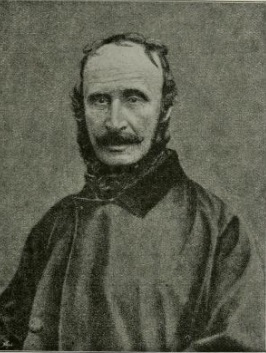Frederick Smith (British Army officer, born 1790) facts for kids
Quick facts for kids
Sir Frederick Smith
|
|
|---|---|
 |
|
| Member of Parliament for Chatham |
|
| In office 1857–1865 |
|
| Preceded by | Leicester Viney Vernon |
| Succeeded by | Arthur Otway |
| In office 1852–1853 |
|
| Preceded by | George Byng |
| Succeeded by | Leicester Viney Vernon |
| Personal details | |
| Born |
John Mark Frederick Smith
11 January 1790 London, United Kingdom |
| Died | 20 November 1874 (aged 84) London, United Kingdom |
| Resting place | Kensal Green cemetery |
| Alma mater | Royal Military College, Sandhurst Royal Military Academy, Woolwich |
| Military service | |
| Allegiance | |
| Branch/service | |
| Rank | Major-General |
| Commands | Royal Engineers |
| Battles/wars | |
Sir John Mark Frederick Smith (born 11 January 1790, died 20 November 1874) was an important British general. He was a high-ranking officer in the Royal Engineers, which is a special part of the British Army that deals with engineering and construction. Sir John was also a Member of Parliament (MP) for a place called Chatham. This means he helped make laws for the country. He was an MP twice, first from 1852 to 1853, and then again from 1857 to 1865. He was also a Fellow of the Royal Society, which is a group for top scientists.
Contents
Early Life and Military Career
Sir John Mark Frederick Smith was born in Paddington, London, on 11 January 1790. His father was also a Major-General in the army. John Smith went to two important military schools: the Royal Military College and the Royal Military Academy, Woolwich.
After finishing his training, he became a second lieutenant in the Royal Engineers in 1805. He joined his unit in Chatham in 1806.
Serving in the Napoleonic Wars
In 1807, Smith went to Sicily. He served in the Napoleonic Wars, which were a series of big conflicts in Europe.
- In 1809, he helped capture the castle of Ischia and the island of Procida in the Bay of Naples.
- He also took part in capturing the islands of Zante and Kephalonia.
- In 1810, he was involved in a battle near Santa Maura. He was one of only a few engineer officers there. He worked hard during the siege, and his efforts were noted by his commanders.
Smith was promoted to captain in 1811. He continued to serve in places like Albania and Sicily. In 1812, he returned to England and became an adjutant for the Royal Sappers and Miners at Woolwich. This was a key role in training and managing these skilled military engineers.
Later Military and Public Service
After the wars, Smith continued his military duties in England. He became a lieutenant-colonel in 1830 and was put in charge of the Royal Engineers in the London area.
He received several honors:
- In 1831, King William IV made him a knight of the Royal Hanoverian Guelphic Order.
- He was also made a Knight Bachelor in the same year, which meant he could use "Sir" before his name.
- He became a "Gentleman Usher" for the King, a special role in the royal household, which he held for the rest of his life.
In 1840, Smith became an inspector-general of railways. This was a very important job because railways were new and growing fast. He checked and approved major railway lines, like the London and Birmingham Railway, before they could open to the public. He also worked with Professor Peter Barlow to report on railway connections between major cities like London, Edinburgh, and Glasgow.
In 1845, Smith was part of a special group that looked into whether all railways should use the same rail gauge (the distance between the tracks). This was a big issue as different gauges caused problems for travel and trade.
He continued to rise in the military, becoming a colonel in 1846 and a major-general in 1854.
Parliamentary Career
Sir John Mark Frederick Smith was elected as a Conservative MP for Chatham in July 1852. However, he lost his seat in March 1853 after a challenge.
In 1857, he was elected again as the MP for Chatham. He had to leave his military command at Aldershot because his work in Parliament took up so much of his time. He was part of important groups that studied things like harbors and army promotions. He was re-elected in 1859 and served as an MP until 1868.
He continued to be promoted in the army, becoming a lieutenant-general in 1859 and a full general in 1863.
Sir John Mark Frederick Smith passed away on 20 November 1874, at his home in London. He was buried in Kensal Green cemetery. He was a Fellow of the Royal Society, showing his interest in science and learning.
Works
Sir John Mark Frederick Smith wrote a book called 'The Military Course of Engineering at Arras’ in 1850. He also translated a book by Marshal Marmont about the 'Present State of the Turkish Empire' from French into English.
Family
Sir John Mark Frederick Smith married Harriet Thorn in 1813. They did not have any children.

